Before the band’s first Nashville show since the early 2000s, guitarist Adam Christianson (above right) and guitarist/tech Martyn Evans (middle) talk shop with PG’s Perry Bean to illuminate their burgeoning taste for gear and tone.
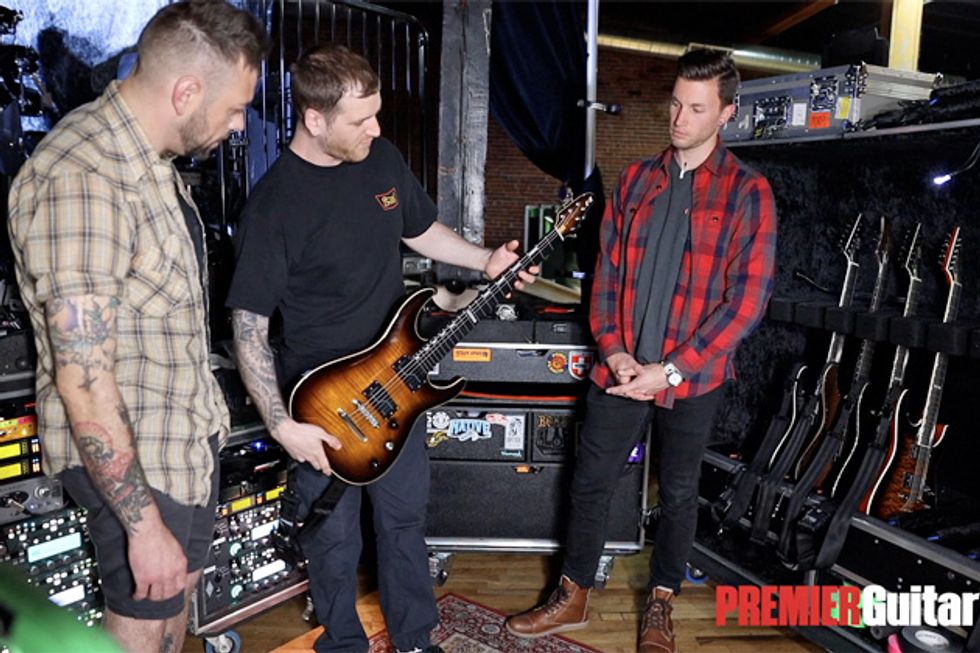
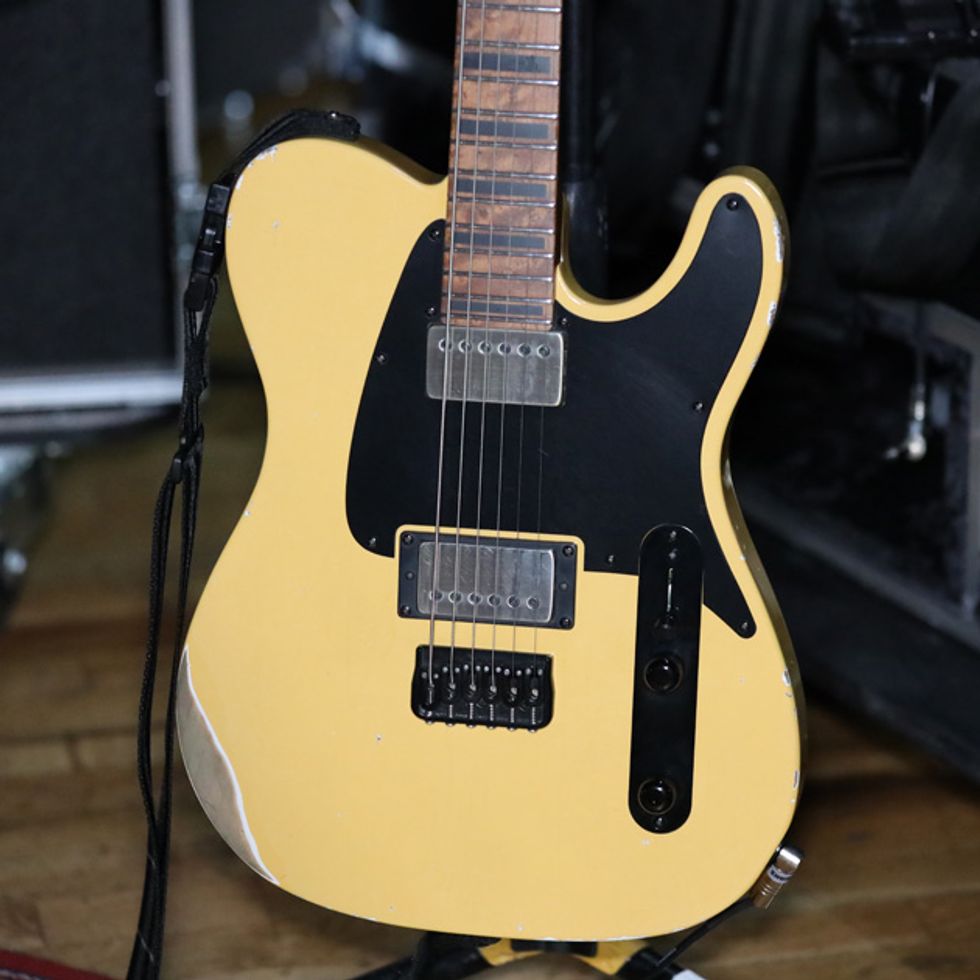
Knowing the style of heavy music Adam Christianson and the rest of Architects play would lead you to believe his main influence for his signature LSL Bari Bone T-style would be Jim Root of Slipknot but pump the brakes. The native Canuck actually is a staunch Merle Haggard fan. Furthermore, his T-style is a 24-fret, 27.5"-scale baritone to compensate for the band’s low tunings and the saggy string tension. The tonewoods include a roasted ash body with a roasted maple neck. This one is loaded with a set of Bare Knuckle Ragnarok pickups and sees action during songs tuned down to F#. He picks with Dunlop Jazz IIIs, and all of his guitars implement sets of custom-gauged D’Addario strings. For F# guitars, he uses .011–.015–.020w–.030–.042–.072 and for G# he swaps the 6th string for a .070, and for C# he uses a .060.
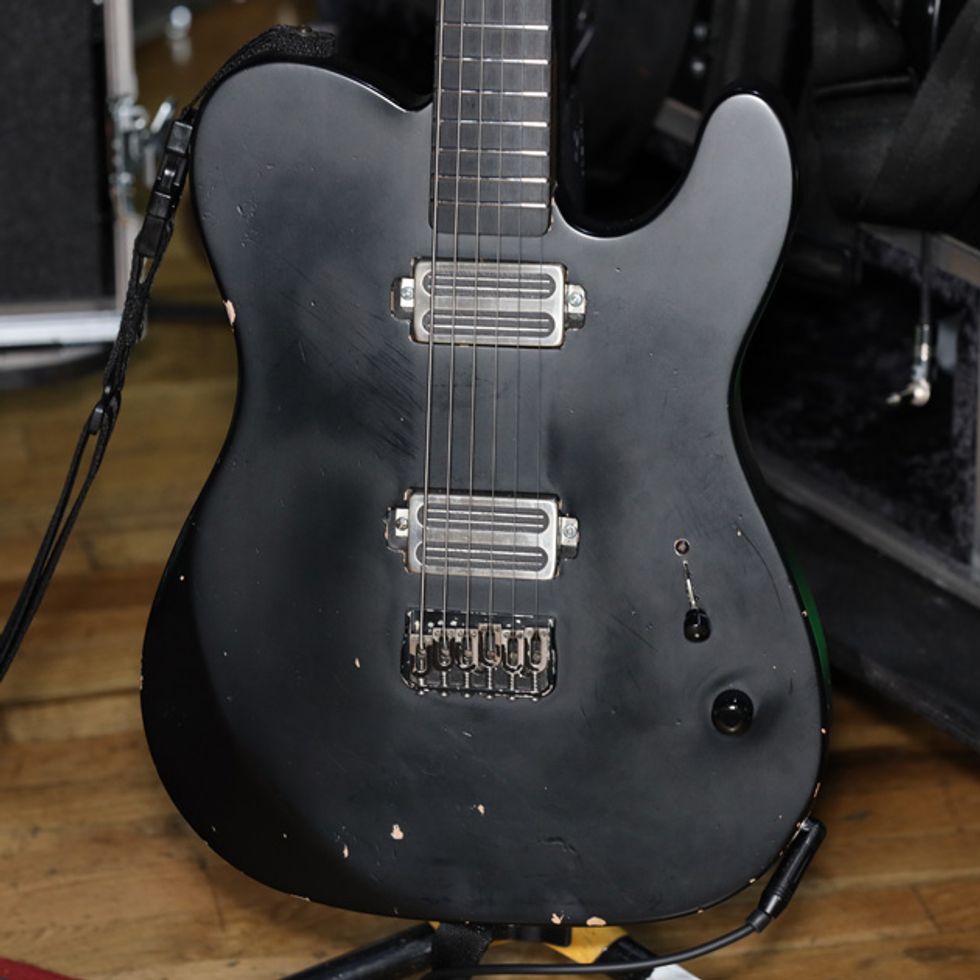
Here is the original prototype of Adam Christianson’s signature LSL Bari Bone that has a slightly different neck profile, only 22 frets, an alder body, and Bare Knuckle Impulse pickups.
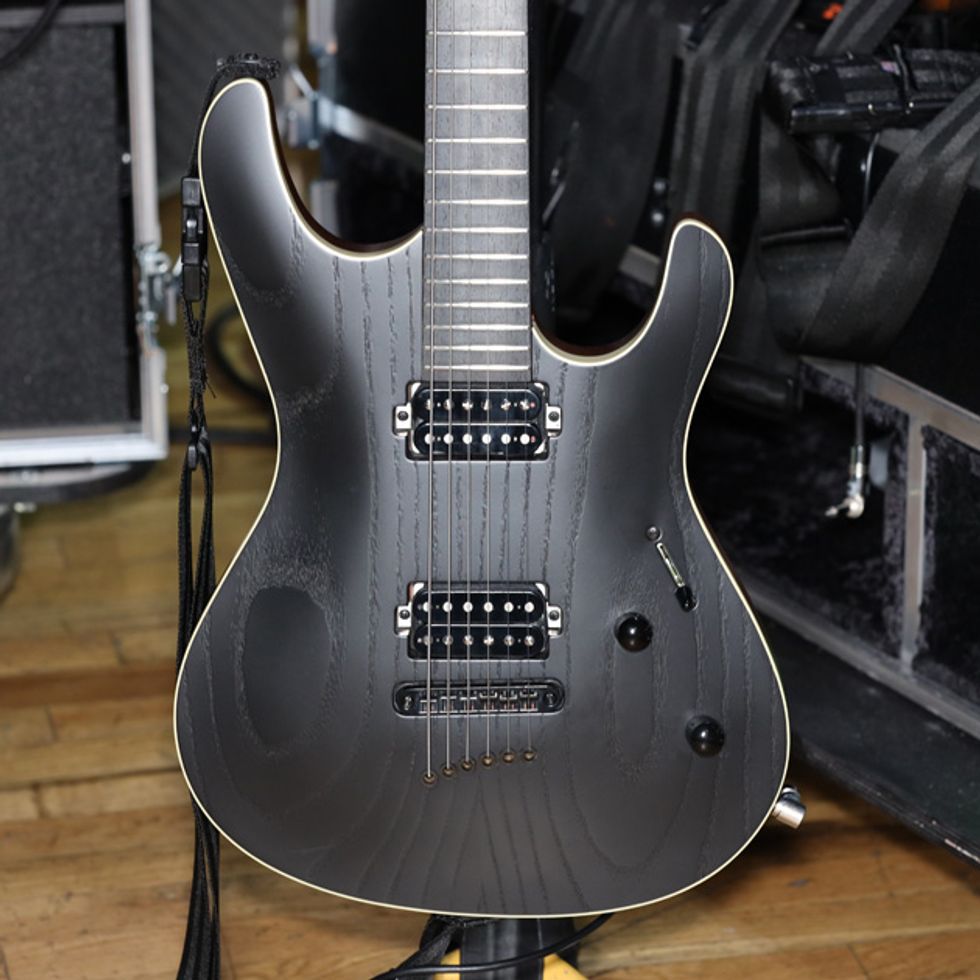
This is Adam Christianson’s main G# ride and it’s a Mayones Setius. Like the others, it has a set of Bare Knuckles, but its body wood is mahogany for a darker, robust tone.
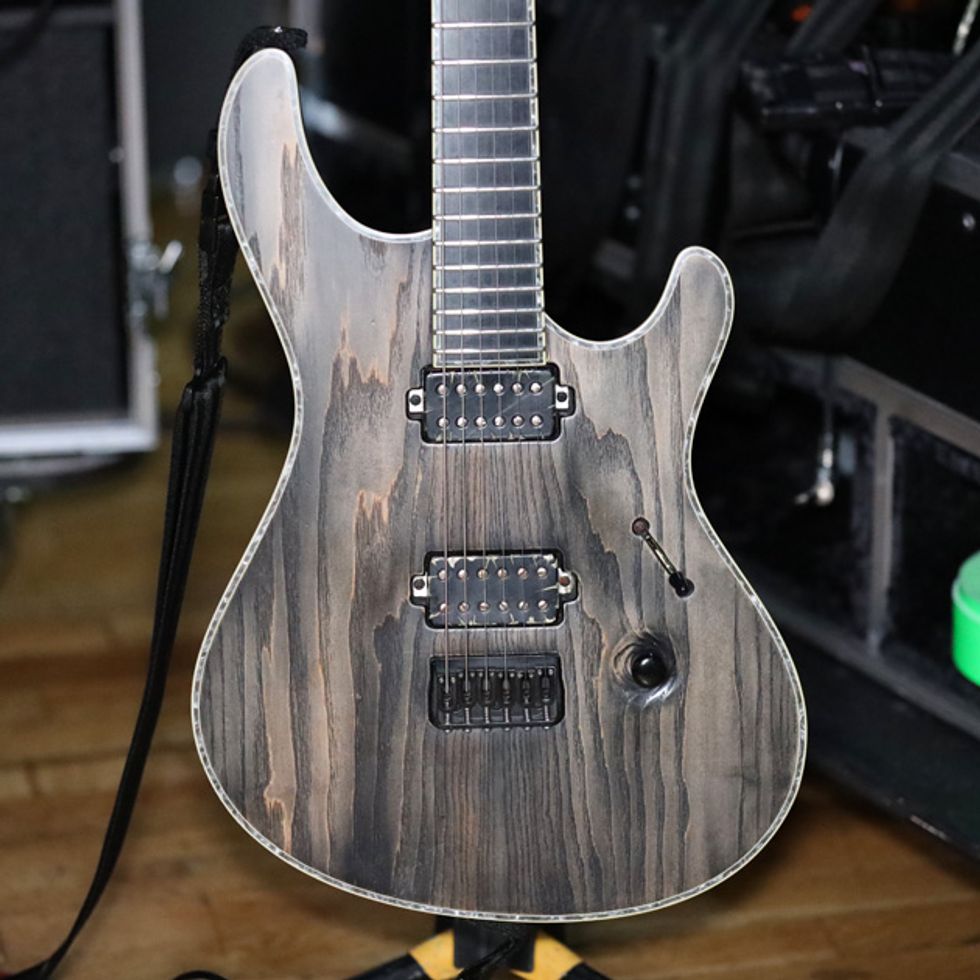
This is the first custom baritone that Adam Christianson received from Mayones. It is a Regius model that has a 11-ply, neck-through design.
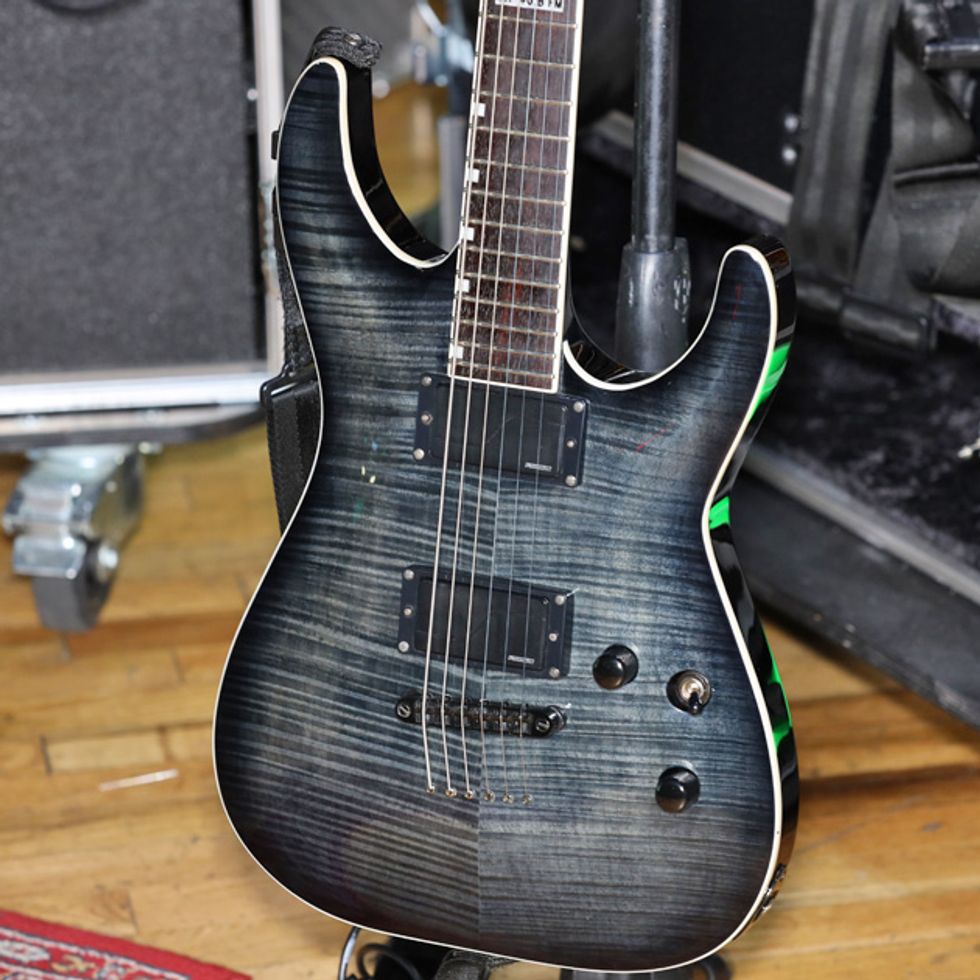
During this U.S. run of dates, Architects’ second guitarist Josh Middleton stayed back in the U.K. to welcome his first child into the world, so his tech Martyn Evans filled in using Josh’s gear. Above is Josh’s main F# machine—an ESP LTD MH-401B FM that is completely stock aside from the Fishman Fluence Modern pickups. Like Adam’s guitars, Josh/Martyn use custom-gauged sets of D’Addario. For F# they use .011–.015–.019–.032–.044–.072, for G# guitars they go with a .070 on the 6th string, and for C# guitars they use a .060. (Josh became the band’s full-time replacement in 2017 following the untimely death of cofounding guitarist Tom Searle in 2016.)
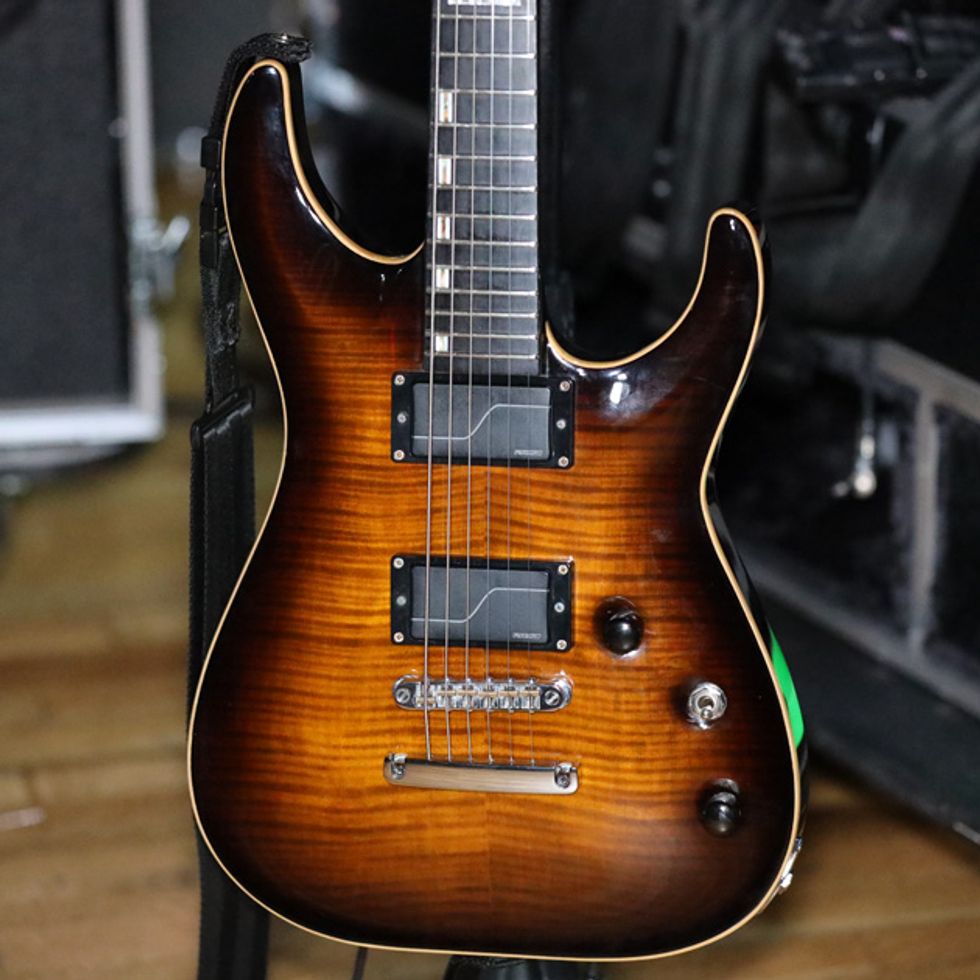
For G# duties, Josh Middleton and Martyn Evans depend on this ESP Horizon E-II that has been upgraded with a pair of the Fishman Fluence Killswitch Engage pickups.
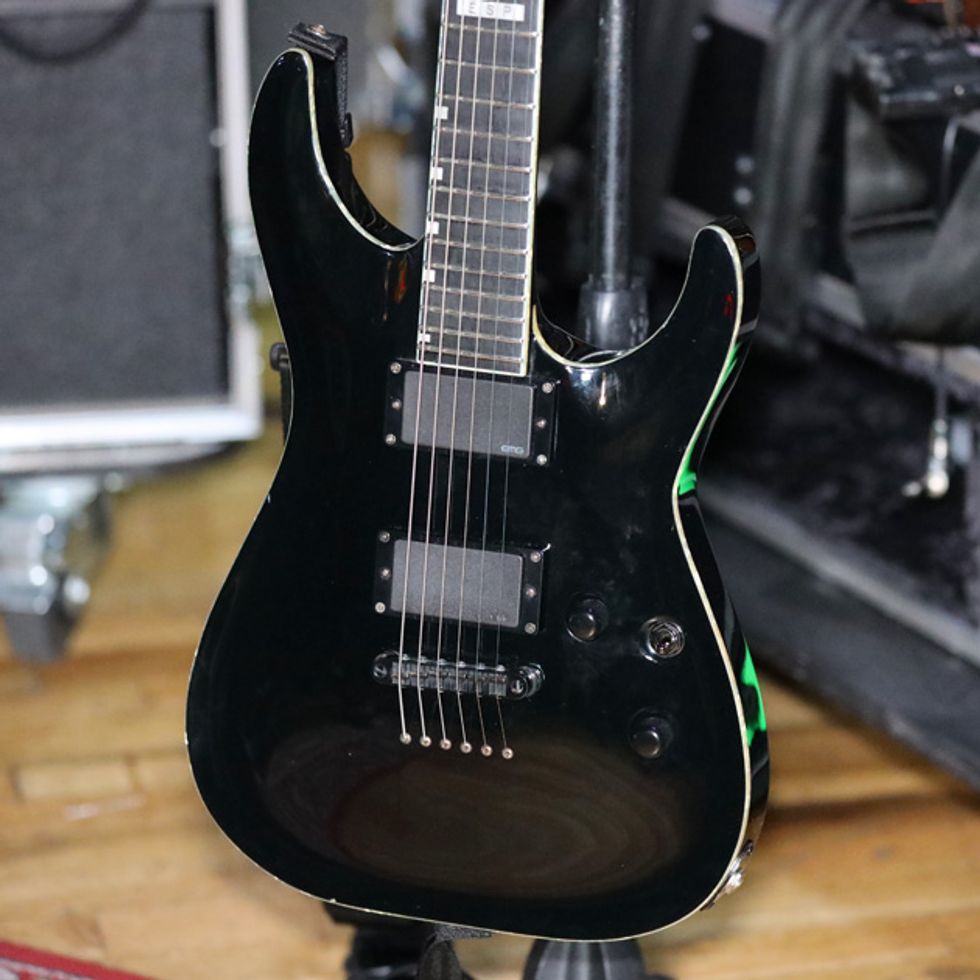
To honor their fallen brother and cofounding member, Tom Searle, the band busted out his ESP Horizon.
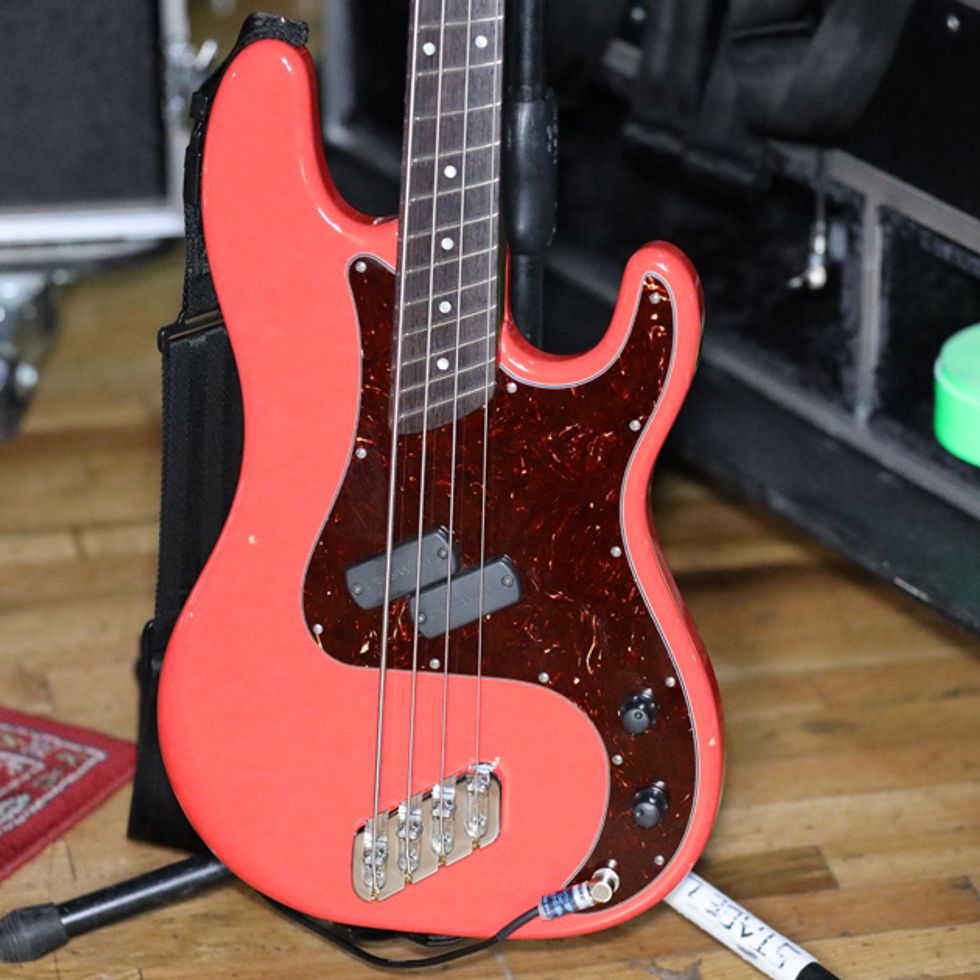
Bassist Alex “Ali” Dean got introduced to Dingwall basses by friend and fellow low-end bruiser Adam “Nolly” Getgood of Periphery. One of his go-to live basses is this Dingwall Super P that can handles both G# and F# songs.
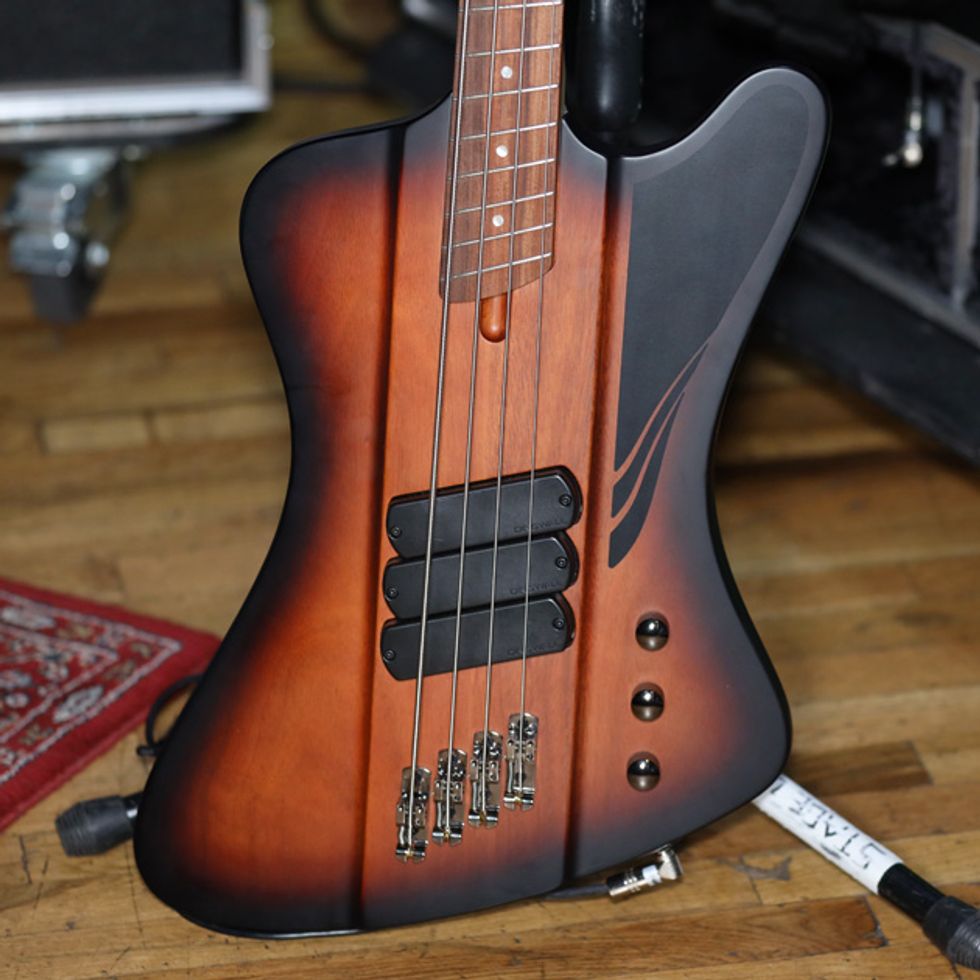
The ying to Alex Dean’s Dingwall P’s yang is this Dingwall D-Bird that also handles G# and F# songs. Both basses use custom-gauged D’Addario strings that run .050–.070–.090–.145. The Super P uses Long Scales while the D-Bird above rocks Super Long Scales.
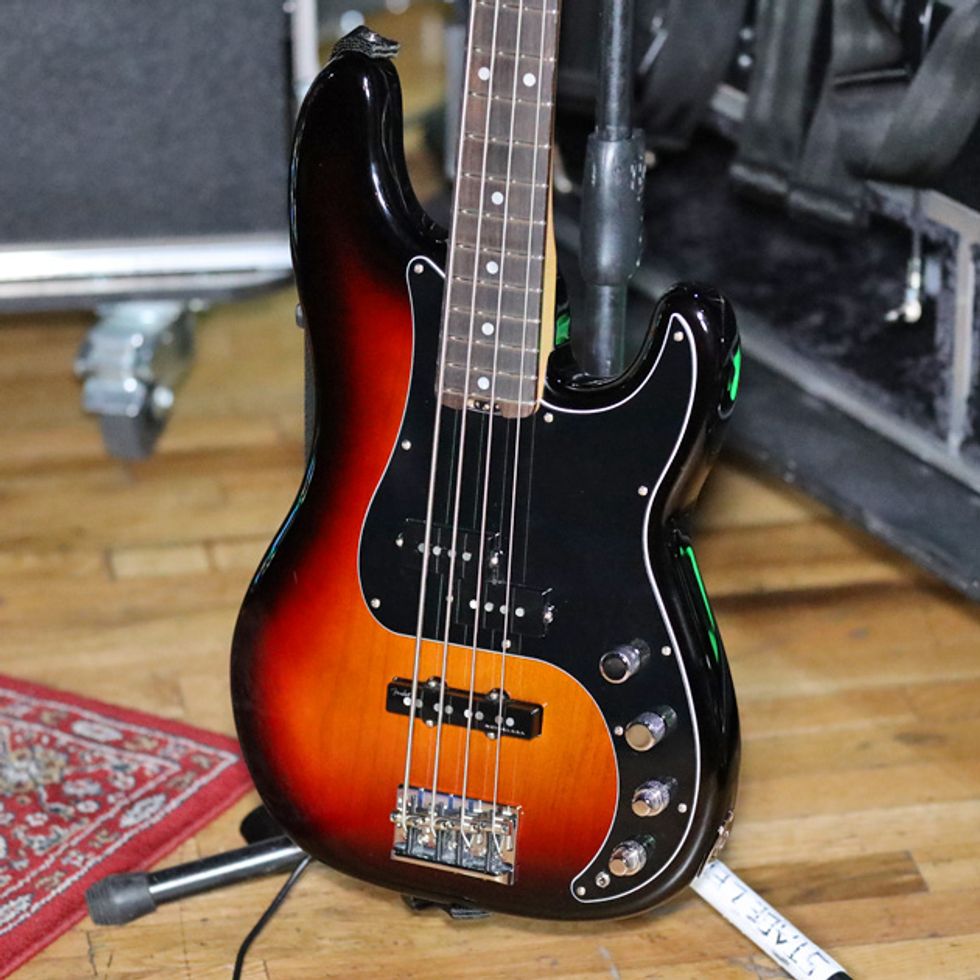
And Alex Dean’s Fender Deluxe Active P bass handles C# songs and is equipped with D’Addario strings gauged .050–.125.
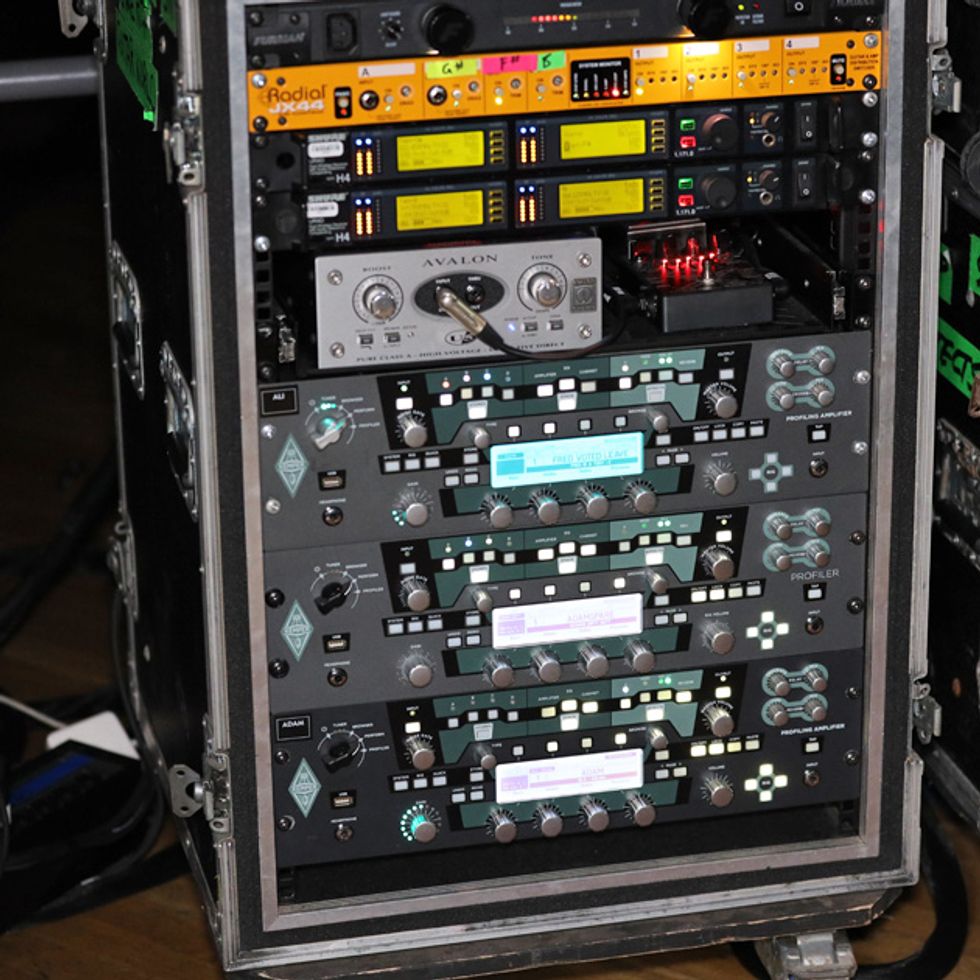
Everyone in the band trusts their live tone to the Kemper Profiler amp. Alex Dean also sends a direct signal to FOH via the Avalon U5 DI and gets some filth thanks to the Darkglass MTB7K Microtubes B7K Ultra Overdrive (not pictured).
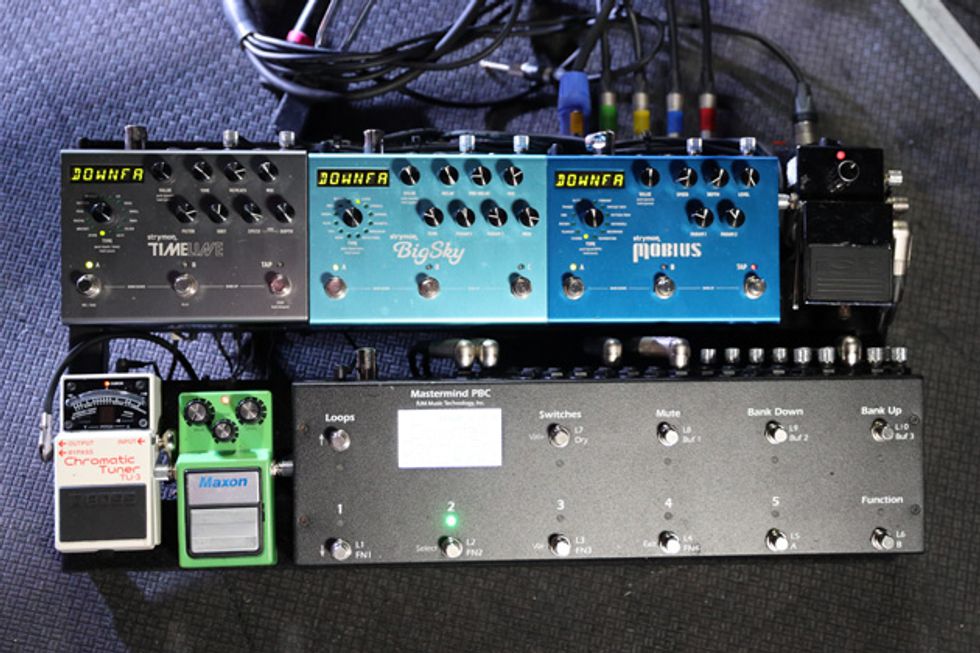
Out onstage, Adam Christianson cooks with a few extra spices that live on his board including some Strymons (TimeLine, BigSky, and Mobius), Maxon OD-9, an ISP Decimator kills any unwanted noise, the Boss TU-3 Chromatic Tuner keeps everything in check, and the RJM Mastermind PBC is the brains of the operation.
Click to subscribe to our weekly Rig Rundown podcast:
D'Addario DIY Solderless Power Cable Kit: https://www.daddario.com/PowerSolutionsRR


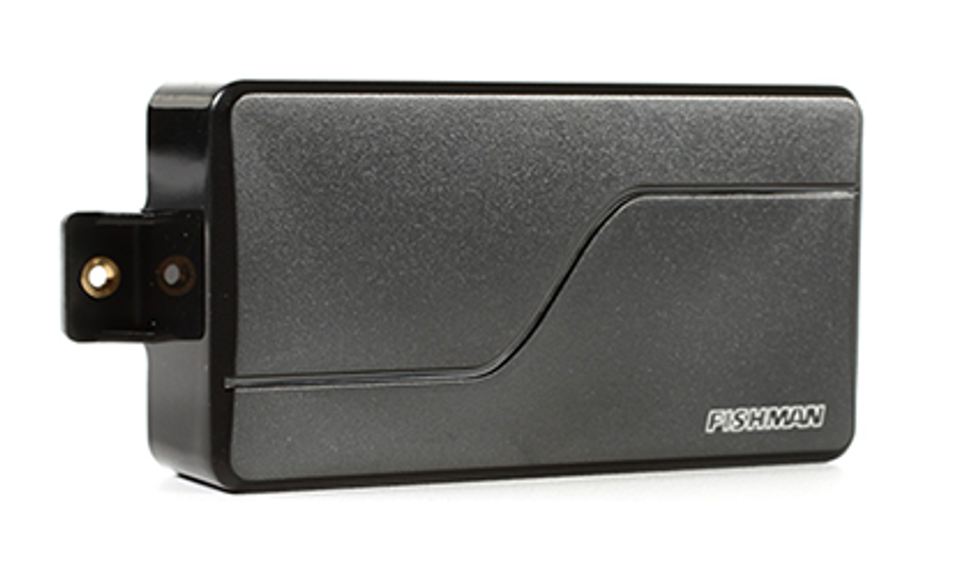
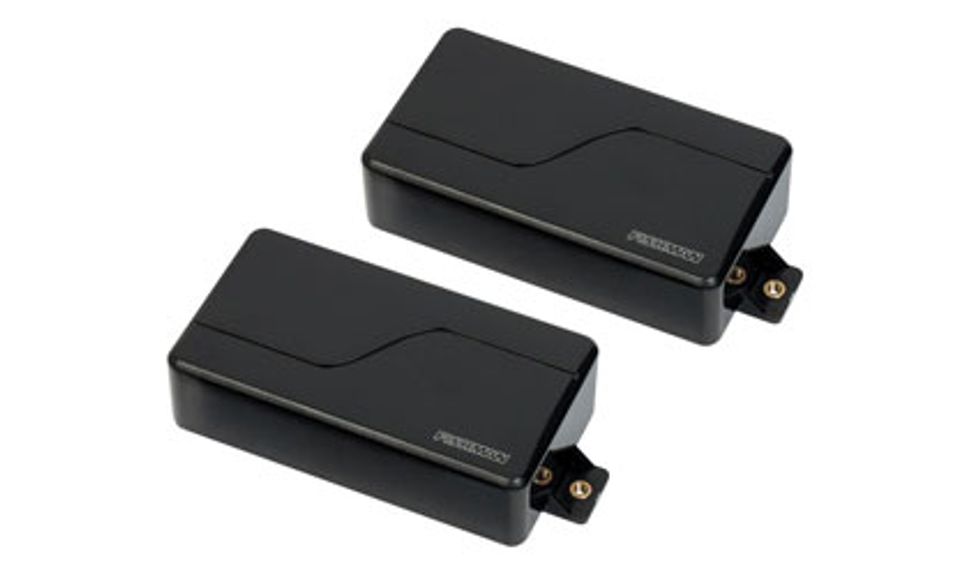
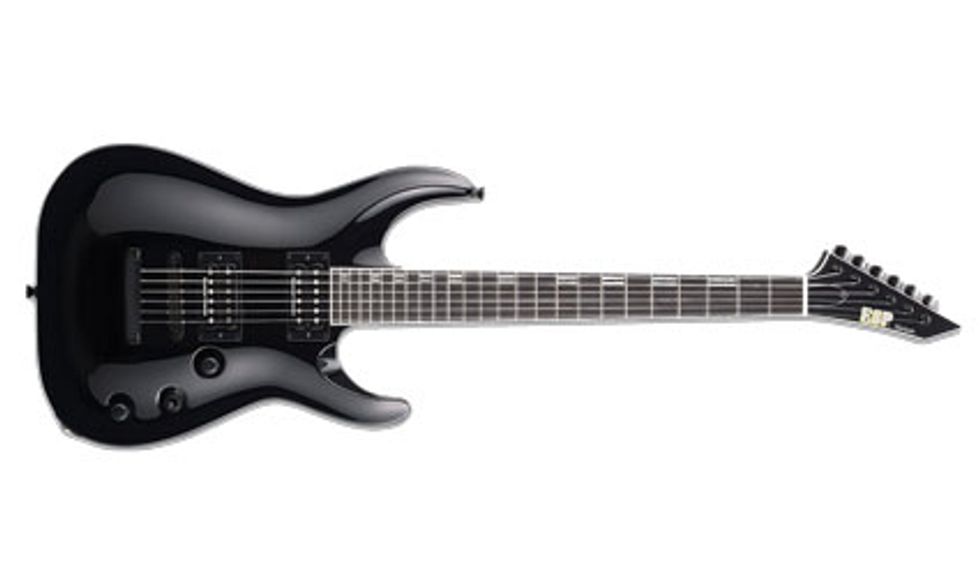
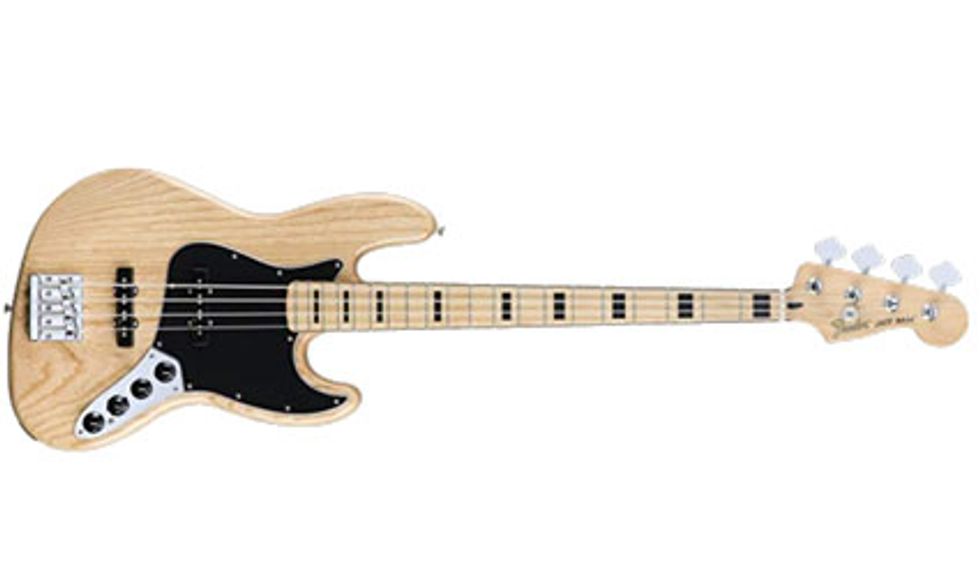
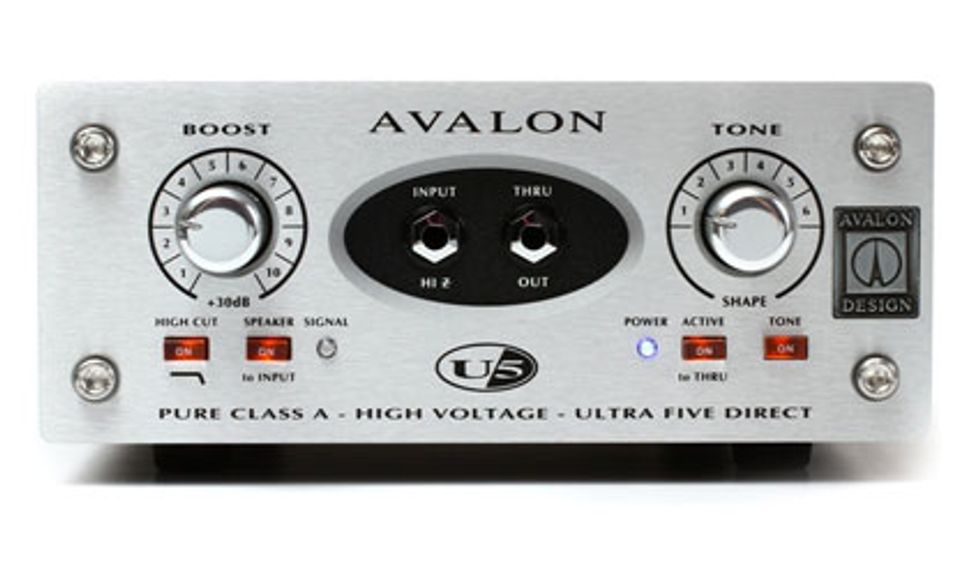
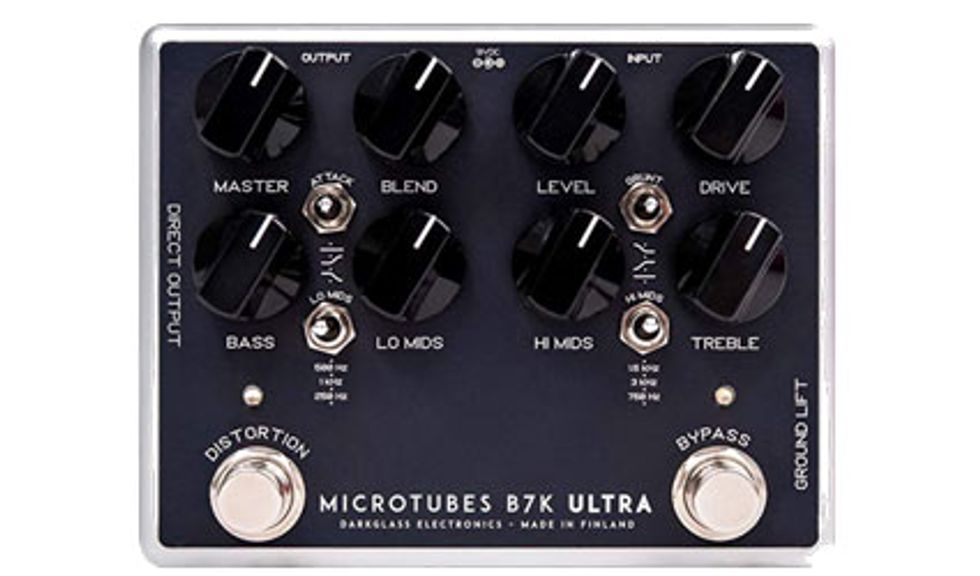
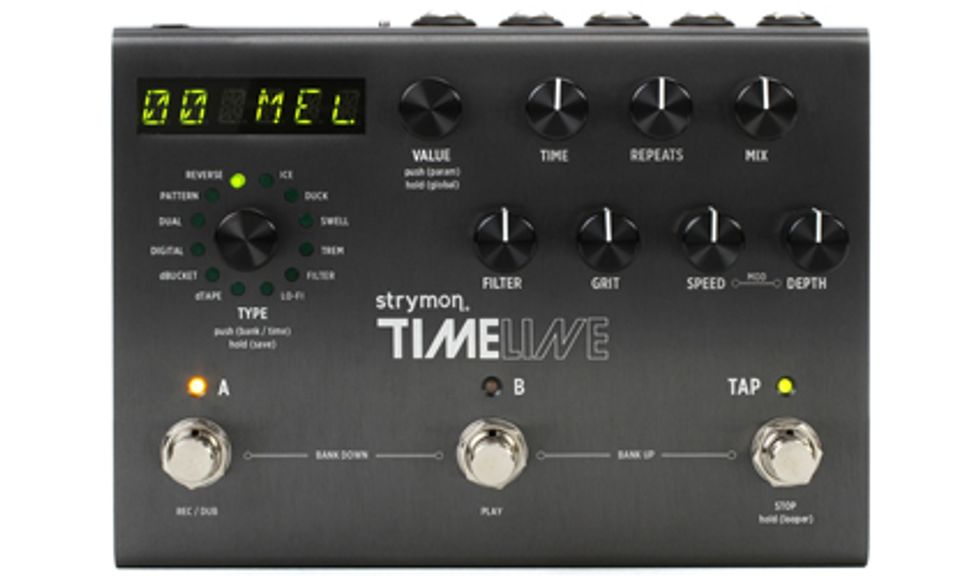

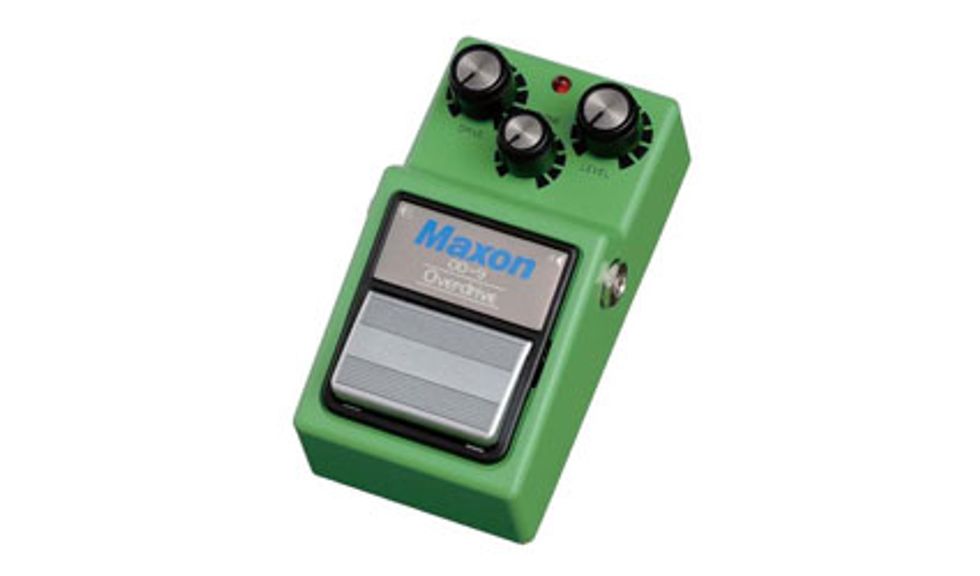
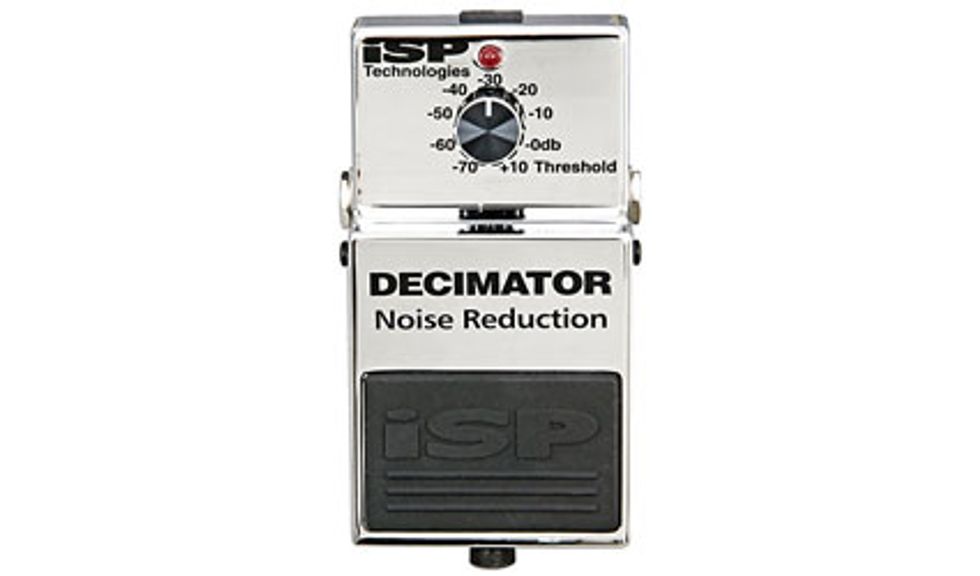





![Rig Rundown: AFI [2025]](https://www.premierguitar.com/media-library/youtube.jpg?id=62064741&width=1245&height=700&quality=70&coordinates=0%2C0%2C0%2C0)












 Shop Scott's Rig
Shop Scott's Rig




![Devon Eisenbarger [Katy Perry] Rig Rundown](https://www.premierguitar.com/media-library/youtube.jpg?id=61774583&width=1245&height=700&quality=70&coordinates=0%2C0%2C0%2C0)








 Zach loves his Sovtek Mig 60 head, which he plays through a cab he built himself at a pipe-organ shop in Denver. Every glue joint is lined with thin leather for maximum air tightness, and it’s stocked with Celestion G12M Greenback speakers.
Zach loves his Sovtek Mig 60 head, which he plays through a cab he built himself at a pipe-organ shop in Denver. Every glue joint is lined with thin leather for maximum air tightness, and it’s stocked with Celestion G12M Greenback speakers.









